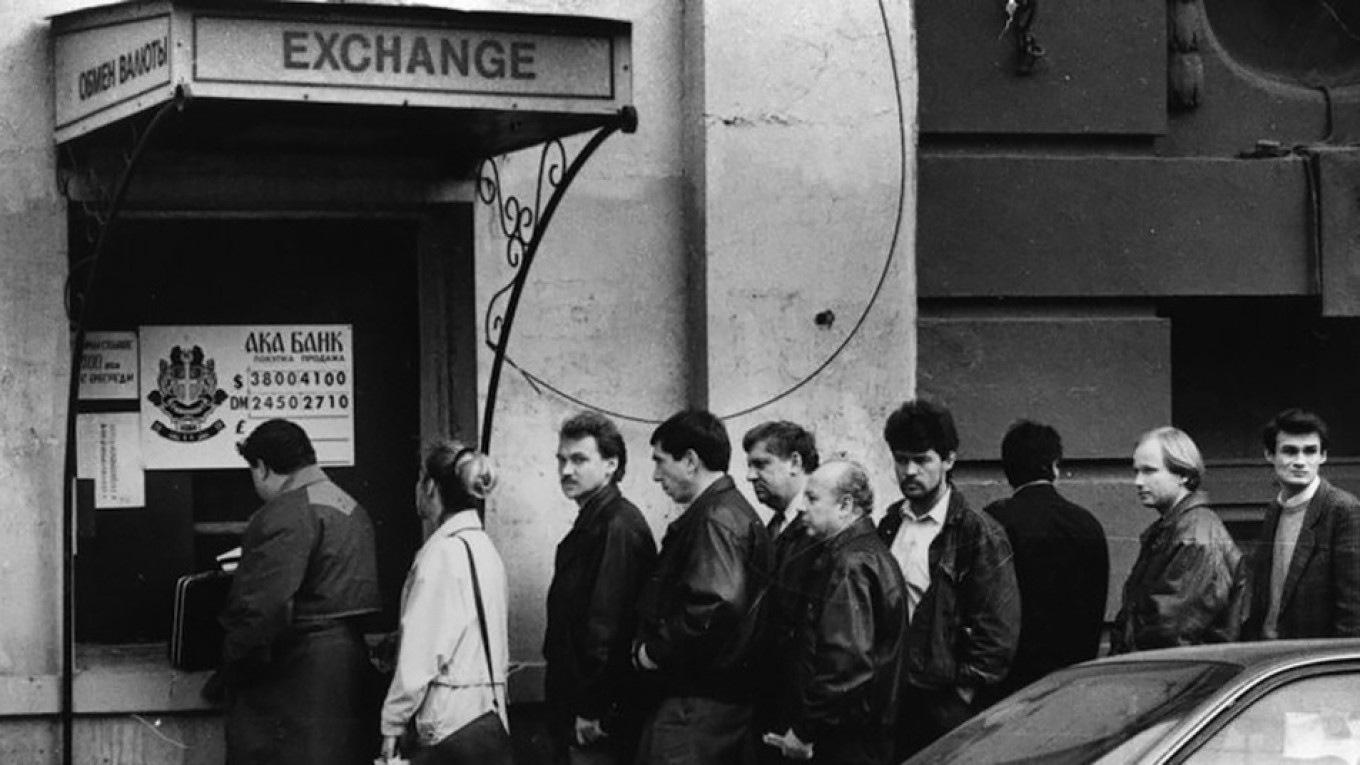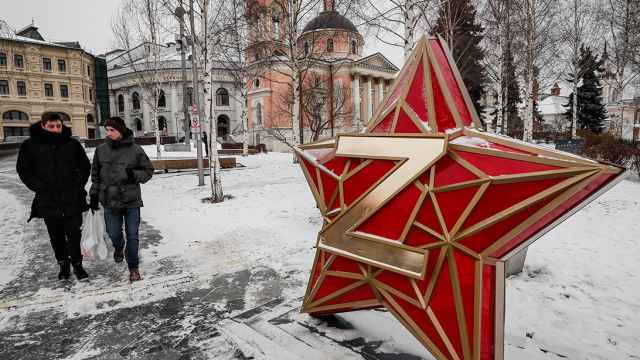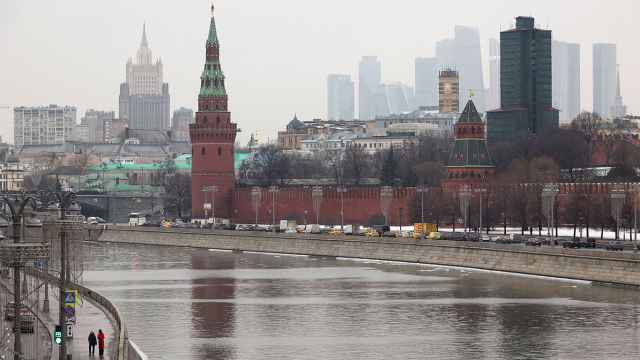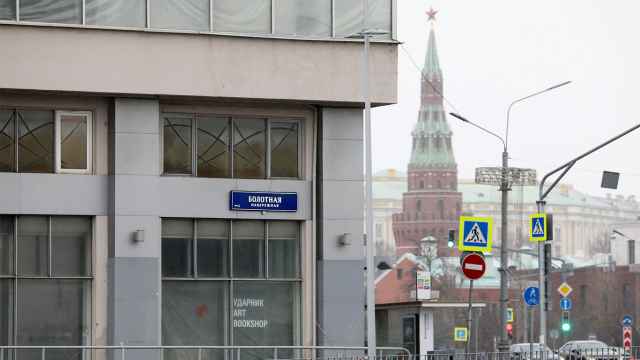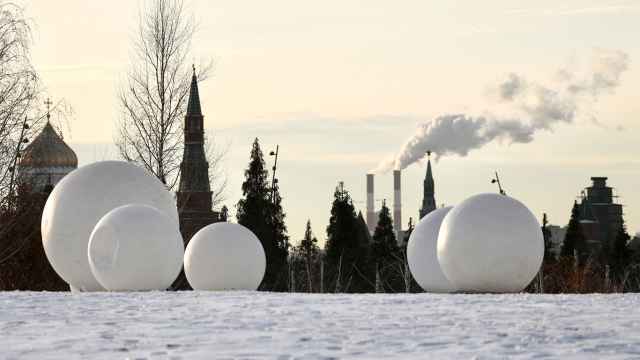The enormity of Russia’s financial collapse on Aug. 17, 1998 only really hit home with me the next day. “We are so f-cked,” George Kogan, one of Moscow’s most famous and longest serving equity salesman, explained to me standing in the apartment of Simon Dunlop, one of Moscow’s most famous entrepreneurs. “The whole system has just crashed. It will take years for Russia to recover.”
Moscow had been a party town for the two preceding years. The pain of Prime Minister Yegor Gaidar’s shock therapy was finally beginning to fade. The ruble had been a stable RUB6 to the dollar for nearly a year. Inflation was creeping downwards and was in the teens, as were the interest rates on the government’s GKO treasury bills. The expats in Moscow were in a tizzy following a stock market boom, where the Russian Trading System (RTS) had risen from its 1996 inaugural starting point of 100 to over 500 by the end of 1997. Investment bankers were trembling with excitement at the amount of money they were making. Everyone knew what the market’s closing price was that day and the conversation was all about which sector or “great unpronounceable” listed name would take off next.
On the other side of the fence the traders were coining it in. Thanks to a ruble exchange trading corridor, the national currency was overpriced, pushed up by oil and gas exports, making the import business a gold mine. “I don't know anyone who is not worth $3 million,” one of these traders told me at a party a few months earlier, sipping a vintage single malt.
When the crash came, the traders were as badly caught out as the equity sales people. The traders had been spending their money as fast as they made it, squandering cash on yacht hires in France or Mercedes sports cars for their mistresses. All their money was tied up in inventory and suddenly they found themselves without cash in a frozen economy. Most survived, but the upshot was that once their business were running again a few years later they all made sure to have some cash in reserves and property overseas.
Hard to exaggerate
It’s hard to exaggerate the scale and shock of the 1998 crash. The whole Russian economy fell to pieces at a stroke. It had a profound effect on everyone, especially the people in the ministry of finance and central bank, who have worked hard to make sure it never happens again. The current Central Bank of Russia (CBR) governor Elvira Nabiullina was an official in the ministry of finance official then. She was recently called the “most conservative central banker in the world.”
A currency crisis that started in Asia the year before squashed commodity prices and oil fell to $10 a barrel at the start of 1998. Russia’s budget broke even at $14 a barrel in those days (its break-even price in 2008 was $115) and Boris Yeltsin’s government didn't have a lot of cash to start with.
Going into the crisis, the entire state hard currency reserves were a mere $6 billion (vs $460 billion now) so the collapse of the oil prices rapidly caused a meltdown. The newly installed Prime Minister Sergei Kiriyenko tried to stave off the worst, but on Aug. 17 he finally pulled the plug.
The ruble rate fell threefold, overnight from 6 to the dollar to 21 by early September. Inflation soared to over 80 percent and the Central Bank’s attempt to stabilize the economy using a fixed exchange rate between 1994 and 1998 ended in complete failure.
Picking through the rubble
The crisis led to the collapse of the entire top tier of the country's largest private banks. Although most of the depositors of these banks were rescued by the Central Bank, the money was returned so slowly that inflation had eaten up a third to a half of its value. Foreign currency deposits forcibly converted into rubles suffered the same fate. Pensioners’ life savings were wiped out again. I joined a small demonstration outside the central bank building on Naglinya Street in November where pensioners were holding signs addressing the governor: “Mr. Gerashchenko, have a heart. Give us back our money.”
Gerashchenko bailed out the biggest banks with an emergency cash injection from the IMF, but that money immediately left Russia for tropical offshore havens and owners let their banks fold. Most banks moved anything of value into “bridge banks” and let their flagship banks go to the wall. Vladimir Potanin’s Uneximbank was one of the six biggest in the country, but after its valuable assets were transferred to Rosbank — at the time the unknown bank with one office on Kutuzovsky prospect — the bank collapsed and Rosbank quickly hoovered up anything of value to become one of Russia’s largest private banks within a few years.
Russia also defaulted on some $40 billion of GKOs. The short-term treasury bonds widely held by foreign investors, since replaced by the OFZ, are the government’s work-a-day treasury bill (and they are even more extensively held by foreign investors now). These bills were locked into special “S” accounts that allowed some operations but they could not be turned into cash that could be taken out of Russia. Technically Russia did not default, but delayed all bond repayments for five years. Russia eventually honored this obligation and when permission was given for the “S” account money to be used for equity investments a few years later, it contributed to the boom in Russian equities that started in about 2003. Investors eventually made some good money as a result.
But at the time everyone thought that Russia was screwed. The IMF immediately predicted hyperinflation and years of Latin American-style stagnation. It was to everyone’s shock that the economy made a spectacular bounce back.
Revival
I remember in 1999 reading the doom and gloom reports, but their dark predictions didn't tally with life on the street where shops were full and the mood of regular Russians was brightening. I remember wandering around and asking myself: Why are there suddenly so many smaller, mid-market restaurants? When the GDP numbers came out for 2000 showing that the economy had grown by 10 percent, it took at least six months for everyone to realize that the economy was booming and another two years before that translated into a rush into Russian equities.
Among the few business people to realize what was going on was Russia’s top oligarch Roman Abramovich, who in an inspired deal bought control of the PAZ bus plant in 1999, by simply buying up its shares on the open market — the first significant takeover that was not a private equity deal.
That was a revolutionary change in mindset. The 1990s were marred by the robber/raider mentality of asset acquisition. I recall writing a report for the Economist Intelligence Unit at the time, advizing: “Even a 75 percent-plus one share will not ensure control of a company if you get the wrong partners.”
Uber-oligarch Boris Berezovsky pioneered the idea that there was no need to privatize a state-owned company if you could “privatize the cashflow,” which he did to spectacular effect with Aeroflot. Abramovich set in motion an interest in improving corporate governance that led to the spectacular rise of oil major Yukos’ shares. Owner Mikhail Khodorkovsky was persuaded by investment bankers from Brunswick Warburg that he could make more money from his shares than pumping oil and Yukos’ stock went from 20 cents in 1999 to over $15 by 2003 at the time of his arrest, making Khodorkovsky the richest man under 40 in the world.
“I am all three generations of the Rockefellers,” he told me in an interview at the time. “The first were robber-barons. The second consolidated the empire. And the third were royalty.”
That same year in what is now seen as a legendary call, Goldman Sachs chief economist and a Russian veteran who was still in his 20s, Al Breach, marked the entire Russian equity market up to Buy — a call that would have made you millions in under three years if you had followed his advice.
That trend has continued to this day as business owners are investing in their stock by paying the highest dividend yields in the world (another trend started by Abramovich who emptied his oil company Sibneft of cash by paying out 100 percent-plus of profits as dividends just before he sold it to Gazprom in 2005). Corporate governance has progressed to the point where today Abramovich’s mere 6 percent stake in Norilsk Nickel is a major issue in the current boardroom battle among the shareholders over how generous dividend payments should be.
The rapidly rising price of oil fueled the subsequent boom, but that took several years to kick in. What caused the 10 percent growth in 2000 — a record that has yet to be beaten — was the three-quarters devaluation of the ruble and the end of what academics Barry Ickes and Clifford Gaddy dubbed “the virtual economy.”
With costs in rubles but revenues in dollars, the entire oil sector became a massive cash cow overnight that poured more cash into the monetarily desiccated Russian economy. Oil companies invested more into production in 1999 than they had invested in the entire preceding eight years. As if rain had fallen on parched land, the entire economy suddenly burst into bloom.
From crash to cash
The crash was a defining moment in Russian history. It caused enormous pain, but it also reset the Russian economy by more fairly valuing the ruble.
In the mid-1990s, thanks to the hyperinflation, banks that made the oligarchs rich were money-making machines: The game was to get hold of some sort of revenue stream like a state-owned enterprise’s payroll. You then converted the rubles to dollars, waiting as long as you could to pay, then converted the dollars back to rubles. The ruble bill didn't change, but in the meantime hyperinflation had reduced the bills by a huge amount. The bank kept the difference as profit. The upshot was no one wanted to pay for anything in cash — hence the virtual economy. The 1998 devaluation undid this mechanism and cash flooded the economy.
It is easy to lose sight of how hard the 1990s were. Following the fall of the Soviet Union, Russians were plunged into deep poverty. The number of people living on $1.90 a day or less — the standard benchmark — soared into the millions, while life savings were inflated away to nothing in a matter of days after inflation spiked to more than 2,000 percent in the early 1990s.
By 1997, the levels of this kind of poverty had begun to fall dramatically and a sense of optimism, or normalcy, was appearing. But following the 1998 crash, “$1.90 poverty” soared again from 1.1 million people in 1997 to 3.4 million in 1999. It took another decade to eradicate the blight of that kind of wretched quality of life to zero (none of the other BRICS have crossed this line yet). While poverty has been rising again more recently, these days it is measured against a minimum subsistence income poverty line: Currently 13.9 percent of the population are on or under this line — which is on a par with, or significantly better than, what most European countries contend with.
Another marked change was the government’s realization that it had to raise wages. About half the population are dependent on the budget for their wages and about a quarter are directly employed by the state. But with public sector wages lagging the private sector by as much as a factor of 10, this was a recipe for social unrest.
When it came out that Boris Brevnov, a young reformer at the head of the state-owned utilities monopoly United Energy Systems (UES) and a friend of First Deputy Prime Minister Boris Nemtsov, was paid $100,000 a year, such riches caused a scandal. A friend of the 20-something Financial Times bureau chief Chrystia Freeland, now Canada’s foreign minister, Brevnov was western-educated and one of the team of liberals trying to remake Russia’s economy along market lines. (Today no-one bats an eyelid at Rosneft’s Igor Sechin or VTB’s Andrei Kostin, who both receive paychecks north of $30 million a year according to reports, as Russia’s leading state-sponsored oligarchs, or “stoligarchs.”) So wages began to rise by 10 percent a year and the government kept that up for a decade to close the gap, fueling a consumption-driven boom.
At the end of the process, the wage differences between Russia and Western Europe were largely closed on a purchasing power parity (PPP) basis, and increasingly in nominal terms too if grey incomes are included in the equation.
The average monthly salary of employees this July was 42,640 rubles ($678), which is 10.7 percent more than in July last year. In the first half of the year, the average monthly salary increased by 11.1 percent compared to the same period in 2017. Real wage growth has begun to recover again and was up in July by 8 percent in annual terms having clawed back most of the losses endured since the 2014 crisis. This enormous and rapid catch-up forms the bedrock of Putin’s popularity.
Russia went through a dramatic phase-change in 1998. The Yeltsin era was marked by chaos and poverty but after 17 years of Putin, Russia is a more or less normal country where the middle classes have the same sort of expectations as their Western European peers. Obviously the process is not over, but the UNDP marked Russia up to “high income” several years ago, putting it in the same category as developed market peers and the country remains the only emerging market from the 90s to have made this transformation.
Despite all of its many problems, Russia is still in business and it is still growing. Those traders from the 90s are mostly respectable businessmen running tea import emporiums or chains of car dealerships today. Kogan is still an equity salesman and Dunlop owns one of Russia’s most successful online music and book sites, worth several tens of millions of dollars. Both the traders and the politicians learnt some hard lessons from the crisis of 20 years ago. The fact that crises have been the norm for most of most people’s careers has made Russia a more robust contender.
Ben Aris is the founder and editor of Business New Europe, where this article was originally published. The views and opinions expressed in opinion pieces do not necessarily reflect the position of The Moscow Times.

A Message from The Moscow Times:
Dear readers,
We are facing unprecedented challenges. Russia's Prosecutor General's Office has designated The Moscow Times as an "undesirable" organization, criminalizing our work and putting our staff at risk of prosecution. This follows our earlier unjust labeling as a "foreign agent."
These actions are direct attempts to silence independent journalism in Russia. The authorities claim our work "discredits the decisions of the Russian leadership." We see things differently: we strive to provide accurate, unbiased reporting on Russia.
We, the journalists of The Moscow Times, refuse to be silenced. But to continue our work, we need your help.
Your support, no matter how small, makes a world of difference. If you can, please support us monthly starting from just $2. It's quick to set up, and every contribution makes a significant impact.
By supporting The Moscow Times, you're defending open, independent journalism in the face of repression. Thank you for standing with us.
Remind me later.



